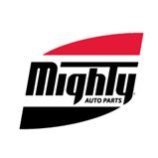-
Welcome to Auto Parts Forum
Whether you are a veteran automotive parts guru or just someone looking for some quick auto parts advice, register today and start a new topic in our forum. Registration is free and you can even sign up with social network platforms such as Facebook, X, and LinkedIn.
Injector Pump Failure: Fuel System Flooded with Metal Particles
-
Similar Topics
-
By cey146
I am looking for a good part number for a fuel line. 2007 Chevrolet Silverado 5.3L factory markings of GM 213M type H, on the hose.
I ruined the 90 degree hose connection, which fastens to the fuel pump. Need to replace the hose while changing out the fuel pump.
Thanks for your help.
-
By 1772668470
Installing a power steering pump involves several steps. It’s important to have the correct tools and follow safety precautions. Here’s a step-by-step guide to help you through the process:
Tools and Materials Needed:
New power steering pump
Power steering fluid
Wrench set
Screwdrivers
Pulley puller (if necessary)
Jack and jack stands
Drain pan
Safety glasses and gloves
Torque wrench
Steps to Install a Power Steering Pump:
-
By 1772668470
Hello every one, this is power steering pump factory in china.We have 17 years of manufacturing experience with high quality and competitive price, if you have interest ,pls feel free to contact us. call whats app:+86 18006521672 email:[email protected]
-
By Dorman Products
Before selling a vehicle, make sure to remove personal data from the infotainment system
-
By Counterman
Mark Thomas, North American training manager with U-POL, and Kevin Lewis, regional sales manager with U-POL, demonstrate two-coat texture replacement with U-POL’s Raptor Product System using both a 3M Performance H/O gun and U-POL’s 4880 Professional Vari-Nozzle gun.
link hidden, please login to view
link hidden, please login to view The post
link hidden, please login to view appeared first on link hidden, please login to view.
link hidden, please login to view
-





Recommended Posts
Join the conversation
You can post now and register later. If you have an account, sign in now to post with your account.
Note: Your post will require moderator approval before it will be visible.